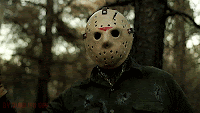Hey, everybody. Hope you’re all safe and, y’know, not bored out of your mind. Social distancing can be a pain, but it’s better for everyone in the long run.
Time for the A2Q again. Thanks for following along so far. At this point, we’ve talked about plot, story, characters, and setting. I want to go over one last thing before we dive in.
And that thing is theme.
Yeah, you just felt a chill, didn’t you? I think we all have a kinda instinctive revulsion to theme because of high school classes where it was sort of parroted out to us and not really explained. Or explained very poorly.
I’ll also be honest—I almost didn’t include theme in this little series or workshop or whatever we’re calling this. Theme is tough. It can be hard to grasp. It’s also one of those things that sometimes happens even if we’re not thinking about it. Likewise, some folks think about it too much and end up driving their story into the ground.
So… how to explain theme?
Okay, look at it this way. You know how I’ve talked about plot versus story? It’s a topic that’s come up here once or thrice before, and I’ve discussed both of them in earlier parts of the A2Q. Plot is outside your characters, story is inside.
 Simply put, in the Venn diagram of plot vs story, theme is where they overlap. It’s the common bond between external and internal that ties things together in my manuscript. If you asked me what my story’s really about, my theme would be the answer that covers the most bases.
Simply put, in the Venn diagram of plot vs story, theme is where they overlap. It’s the common bond between external and internal that ties things together in my manuscript. If you asked me what my story’s really about, my theme would be the answer that covers the most bases.
F’r example… some of you may have heard of Solomon Kane, an old Robert Howard character who’s been in books, comics, poems, and even a pretty solid live action movie—which is what I’ll talk about here. Kane’s a bloodthirsty pirate who finds out he’s actually damned to hell, repents, and ends up becoming a devout Puritan with a vow of pacifism. Problem is… he keeps finding himself in situations where the good guys really need somebody nightmarishly violent and ruthless on their side. So he has to go back to his old ways to try to stop assorted bandits, warlords, evil sorcerers, and even full-on demons.
 So we can say the theme of Solomon Kane (the movie) is “fighting evil,” or maybe a better way to say it would be “fighting against the darkness.” Kane is constantly battling evil in the world, in all its many forms. But he’s also battling the evil within himself, trying to redeem himself and not fall back into old habits and attitudes.
So we can say the theme of Solomon Kane (the movie) is “fighting evil,” or maybe a better way to say it would be “fighting against the darkness.” Kane is constantly battling evil in the world, in all its many forms. But he’s also battling the evil within himself, trying to redeem himself and not fall back into old habits and attitudes.
Of course, it’s easy to identify themes in things that already exist. Trying to make them from scratch, to weave them into this story I’ve been planning… that’s a lot tougher. I mean, this is serious writing stuff now.
But it really isn’t. Honestly, I think one of the reasons we all kinda fear theme is because it’s been made into this sort of literary boogeyman—this thing that looms over the story , and also over the author. What themes is the writer trying to explore? Does this book have a simplistic, common theme? Should we discuss the novel’s theme? At length?
Deep breath. It’s not that bad. Really. In fact, it’s a lot easier than your sixth grade English teacher made it seem.
(yeah , that’s right Mrs. Goodell—I’m calling you out)
Here’s a couple things I think we should keep in mind while we’re talking about theme.
First, at this early stage, it’s okay to only have a general idea what my theme—or themes—are going to be in this book. It shouldn’t be too hard to come up with one or two. Just look at a lot of the elements we’ve been gathering up so far and see what the connections are between them.
In fact, doing this as an exercise can be kind of a test. Or maybe an early warning system. I might have a bunch of really cool elements, but if I can’t find any connections between any of them… well, that means I’ve got a bunch of unconnected elements. Which is, y’know, sort of the opposite of a book. So I might want to reconsider some things.
Second, I should be aware my manuscript might have multiple themes. Not a problem. I mentioned before that there may be multiple stories within my book, so it only stands to reason they’d all intersect the plot in slightly different places on that Venn diagram.
Look at Solomon Kane again. It has the theme of fighting against darkness, but there’s a good argument to be made that it also involves the theme of redemption. It’s an active plot element as Kane tries to make up for his past, and it’s also a story element as he realizes that A) he needs to redeem himself to save his soul and 2) his redemption may need to take a more aggressive form then normal. And that plot-story overlap is a theme, so… hey, there it is.
Third is kinda the flipside of that first one. Again, just my opinion, but… don’t worry about theme too much right now. Definitely have it in mind. Don’t willfully ignore it. But also don’t stress over it. Just write your first draft. Worry about balancing the plot and story you want to write. When I put a lot of advance work into my theme, I run the risk of structuring things to the theme. The plot and story stop being neck and neck out front and the theme becomes the priority. Which is when my theme starts turning into more of a message. And messages can get awkward and heavy-handed really fast.
Again, just my personal opinion, your mileage may vary.
Once that first draft’s done, guess what? The manuscript exists now. And it’s easy to identify themes in things that already exist, remember? I can look back over my first draft and I’ll probably see a theme or three poking out.
Now, again, I don’t like to do too much beforehand, but… let’s look at our werewolf book.
 I can probably guess survival is going to be a major theme in the book, or perhaps “what are we willing to do to survive.” After all our main character, Phoebe, hunts werewolves for a living. And her little sister Luna is a werewolf, a fact she’s trying to hide from Phoebe and their lodge on the off chance they, y’know, kill her. And there’s also survival in the larger sense, that both of them have been doing a lot of things to try to hold their lives together, as individuals and as a little family. And we’re probably going to find out that the lodge is thinking about what they’ll do to survive, too—in the sense of both humanity’s ongoing struggle against werewolves but also the lodge itself as an institution.
I can probably guess survival is going to be a major theme in the book, or perhaps “what are we willing to do to survive.” After all our main character, Phoebe, hunts werewolves for a living. And her little sister Luna is a werewolf, a fact she’s trying to hide from Phoebe and their lodge on the off chance they, y’know, kill her. And there’s also survival in the larger sense, that both of them have been doing a lot of things to try to hold their lives together, as individuals and as a little family. And we’re probably going to find out that the lodge is thinking about what they’ll do to survive, too—in the sense of both humanity’s ongoing struggle against werewolves but also the lodge itself as an institution.
Phoebe and Luna are also both going to be dealing with the idea of family a lot. It’s a motivation for them and a regular thing they’re dealing with—something they’re acting on that’s also acting on them. There’s also this family legacy hanging over them, and the fact they the two of them are the broken remains of a family since their parents’ death.
Which leads me to one last possible theme. The idea of moving on with your life, of getting past things. Both of my main characters want their lives to progress—Luna wants to head off to college and Phoebe wants to get her own life back on track. As I’ve mentioned before, Phoebe’s struggling with a lot of repressed resentment, too. And they’re also going to need to get past a lot of the baggage and preconception their parents left them with if they’re going to deal with Luna’s ahem condition and how it affects both of them.
Again, though… I’m not going to worry about this too much up front. I’m just making the observations now for the A2Q. I’m probably going to worry more about plot and story on my first draft, and later I may come back, look at these early thoughts, and see how they may shape later drafts.
And if you want to think more about these things now, that’s cool, too. As I’ve often said, we all have our own way of working, and what works for me may not work for you. The important thing, for now, is just to be aware of it and have it in that pile of ingredients in your mind before we start cooking.
Speaking of which… it’s probably time we start arranging all these ingredients and get ready to start cooking. So that’s what we’ll do next time. Yeah, next time—let’s just go straight to the next part of the A2Q (unless somebody has serious objections and wants to see something else first)
Until then… go write.









